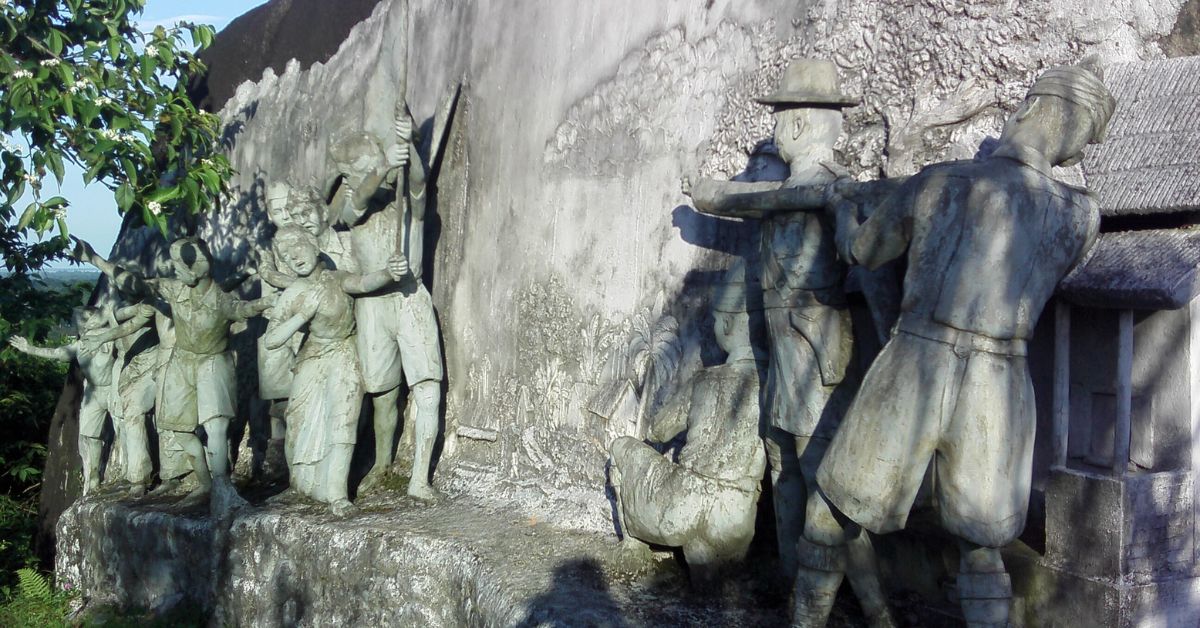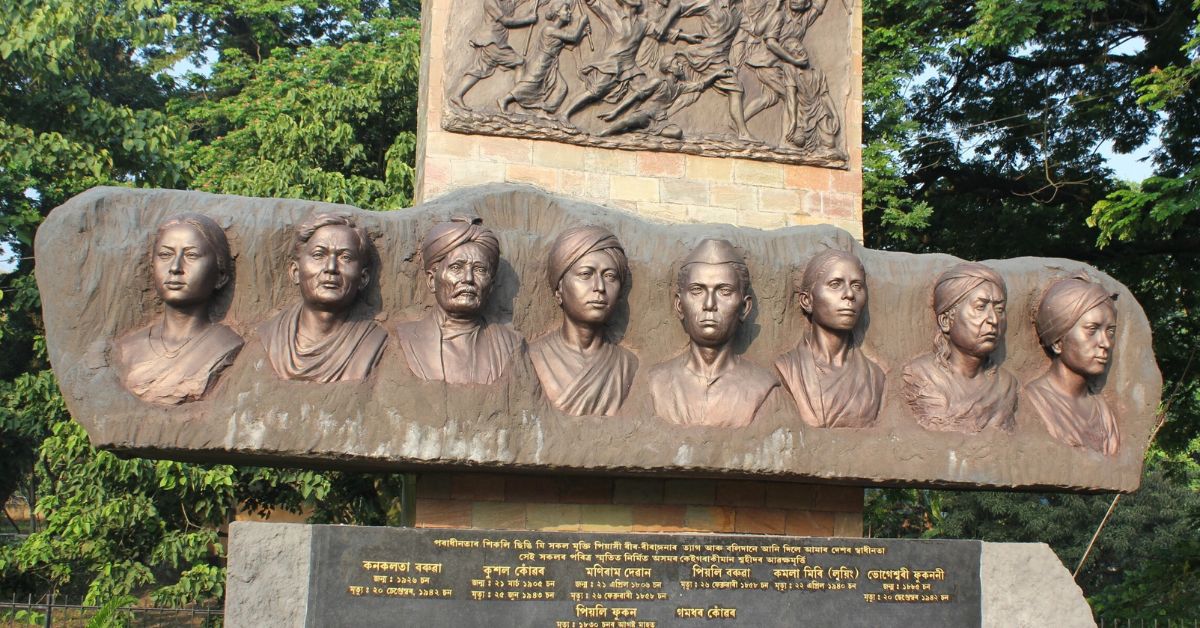India has many great
to tell. The fight for independence, in particular, was able to bring out the heroes from each bylane of the country. History books are flooded with the stories of their supreme sacrifices to drive the British out of the country. And while these books recount stories of men from different parts of the country,
be they women or men, have not found their due credit in the popular narrative.
Hundreds of martyrs from the Northeastern states await their share of appreciation in popular discourse. Among them is Kanaklata Barua, an Assamese freedom fighter who laid down her life at the age of 17 to hoist the tricolour.
To give tribute to her outstanding sacrifice, the Government of India commissioned a coast guard ship in her name in 2020. Lost in the pages of history, here is the story of the teenage martyr.
Kanaklata Barua was born to Krishna Kanta Barua and Korneshwari Barua on 22nd December, 1924 in the village of Barangabari of Gohpur sub-division of Sonitpur . Born to a farming family, Barua’s struggles started at a very young age. Her mother died when she was only five years old. Later on, her father remarried, but passed away a couple of years later. By the time Barua was 13, she was orphaned and left to fend for herself and her siblings. She dropped out of school to raise them.
Meanwhile, the rest of the nation was well into her freedom for struggle — the horrors of the Jaliawalah Bagh massacre of 1919 ignited sparks of agitation all over. In 1920, Gandhi began the Non-Cooperation Movement and encouraged Indians to give up cooperation with the British government in their fight towards self-governance. Kanaklata was born amid this time, which, though turbulent, had fanned the winds of nationalistic sentiment across India.

Kanaklata Barua along with 5000 people marched on to Gohpur police station to unfurl the national flag. Picture credit: Wikimedia commons
As per an article in Feminism in India, Barua was determined from a young age to join India’s freedom struggle. At first, she tried to join the Azad Hind Fauj, or the Indian National Army, a group of armed forces under the command of Subhash Chandra Bose. She wanted to be in the first line of defence and fight for the country. However, her plea was rejected on the grounds of her being a minor. This did not shake her determination, and she later joined Mrityu Bahini – a death/suicide squad.
Mrityu Bahini was founded by Pushpalata Das, the wife of Gandhi follower Omeo Kumar Das. She did so to include the women of undivided Darrang district in the freedom movement. While the Bahini only consisted of adults, Barua’s zeal and enthusiasm got her a ticket in.
The report by Feminism in India states, “She was under 18 years when she joined Mrityu Bahini. She was granted membership because of her zeal to serve the country. She was subsequently made the leader of the women cadres of Mrityu Bahini.”
On the fateful day of 20 September 1942, Barua decided to unfurl the tricolour flag at the Gohpur police station. The Print noted, “Barua led a group of nearly 5,000 unarmed people to hoist the national flag. The police in charge asked them to back off, or he would start firing.”
When Rebati Mahan Som, who was in-charge of the police station, asked Barua and her followers to stop, Barua replied — “You do your duty and I’ll do mine,” and marched on.
The procession started to march forward and the police started firing. Barua, being the leader of the squad, was holding the flag and leading the procession.

In 2020, an Indian Coast Guard’s newly commissioned ship — ICGS Kanaklata Barua, was named after her. Picture credit: Wikimedia commons
“The 17-year-old was shot dead from point-blank range following a squabble with police personnel. Barua, however, made sure the flag did not fall to the ground and did not let go until another volunteer, Mukunda Kakoti, took it from her. Both Barua and Kakoti succumbed to bullet injuries that day,” reports The Print.
Their sacrifice, however, did not go in vain. The tricolour was hoisted at the police station that day, adding more fuel to the movement.
Although an unheard-of name in the history books, Barua with her supreme sacrifice became a symbol of womanhood and patriotism in Assamese history. “Her story of grit and gallantry has a legendary status in Assam — from schools being named after her to a life-size statue that adorns a park in the state,” states The Print.
Her story was retold in Chandra Mudoi’s film Epaah Phulil Epaah Xoril. The Hindi version of the same, titled Purab Ki Awaz was also released in 2017.
As recent as 2020, an Indian Coast Guard’s newly commissioned ship — ICGS Kanaklata Barua, was named after the teenage . The ship, a fifth in a series of fast patrol vessels (FPV), is suitable for patrolling, maritime surveillance, anti-smuggling, anti-poaching operations, fishery protection, as well as rescue and search missions. It has been built by the state-owned Garden Reach Shipbuilders and Engineers Limited.
Kanaklata Barua, the teenager who died for her country, might not be found as easily in the general history books. But her sacrifice is fresh in the hearts of many Assameses.
(Edited by Divya Sethu)
Sources:
Hundreds of martyrs from the Northeastern states await their share of appreciation in popular discourse. Among them is Kanaklata Barua, an Assamese freedom fighter who laid down her life at the age of 17 to hoist the tricolour.
To give tribute to her outstanding sacrifice, the Government of India commissioned a coast guard ship in her name in 2020. Lost in the pages of history, here is the story of the teenage martyr.
Always a patriot
Kanaklata Barua was born to Krishna Kanta Barua and Korneshwari Barua on 22nd December, 1924 in the village of Barangabari of Gohpur sub-division of Sonitpur . Born to a farming family, Barua’s struggles started at a very young age. Her mother died when she was only five years old. Later on, her father remarried, but passed away a couple of years later. By the time Barua was 13, she was orphaned and left to fend for herself and her siblings. She dropped out of school to raise them.
Meanwhile, the rest of the nation was well into her freedom for struggle — the horrors of the Jaliawalah Bagh massacre of 1919 ignited sparks of agitation all over. In 1920, Gandhi began the Non-Cooperation Movement and encouraged Indians to give up cooperation with the British government in their fight towards self-governance. Kanaklata was born amid this time, which, though turbulent, had fanned the winds of nationalistic sentiment across India.

Kanaklata Barua along with 5000 people marched on to Gohpur police station to unfurl the national flag. Picture credit: Wikimedia commons
As per an article in Feminism in India, Barua was determined from a young age to join India’s freedom struggle. At first, she tried to join the Azad Hind Fauj, or the Indian National Army, a group of armed forces under the command of Subhash Chandra Bose. She wanted to be in the first line of defence and fight for the country. However, her plea was rejected on the grounds of her being a minor. This did not shake her determination, and she later joined Mrityu Bahini – a death/suicide squad.
Mrityu Bahini was founded by Pushpalata Das, the wife of Gandhi follower Omeo Kumar Das. She did so to include the women of undivided Darrang district in the freedom movement. While the Bahini only consisted of adults, Barua’s zeal and enthusiasm got her a ticket in.
The report by Feminism in India states, “She was under 18 years when she joined Mrityu Bahini. She was granted membership because of her zeal to serve the country. She was subsequently made the leader of the women cadres of Mrityu Bahini.”
The 17-year-old leader of a ‘death squad’
On the fateful day of 20 September 1942, Barua decided to unfurl the tricolour flag at the Gohpur police station. The Print noted, “Barua led a group of nearly 5,000 unarmed people to hoist the national flag. The police in charge asked them to back off, or he would start firing.”
When Rebati Mahan Som, who was in-charge of the police station, asked Barua and her followers to stop, Barua replied — “You do your duty and I’ll do mine,” and marched on.
The procession started to march forward and the police started firing. Barua, being the leader of the squad, was holding the flag and leading the procession.

In 2020, an Indian Coast Guard’s newly commissioned ship — ICGS Kanaklata Barua, was named after her. Picture credit: Wikimedia commons
“The 17-year-old was shot dead from point-blank range following a squabble with police personnel. Barua, however, made sure the flag did not fall to the ground and did not let go until another volunteer, Mukunda Kakoti, took it from her. Both Barua and Kakoti succumbed to bullet injuries that day,” reports The Print.
Their sacrifice, however, did not go in vain. The tricolour was hoisted at the police station that day, adding more fuel to the movement.
Her name lives on
Although an unheard-of name in the history books, Barua with her supreme sacrifice became a symbol of womanhood and patriotism in Assamese history. “Her story of grit and gallantry has a legendary status in Assam — from schools being named after her to a life-size statue that adorns a park in the state,” states The Print.
Her story was retold in Chandra Mudoi’s film Epaah Phulil Epaah Xoril. The Hindi version of the same, titled Purab Ki Awaz was also released in 2017.
As recent as 2020, an Indian Coast Guard’s newly commissioned ship — ICGS Kanaklata Barua, was named after the teenage . The ship, a fifth in a series of fast patrol vessels (FPV), is suitable for patrolling, maritime surveillance, anti-smuggling, anti-poaching operations, fishery protection, as well as rescue and search missions. It has been built by the state-owned Garden Reach Shipbuilders and Engineers Limited.
Kanaklata Barua, the teenager who died for her country, might not be found as easily in the general history books. But her sacrifice is fresh in the hearts of many Assameses.
(Edited by Divya Sethu)
